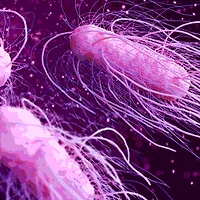Will FSIS Declare 31 Salmonella Serovars Adulterants in Meat and Poultry?

Marler Clark LLP filed a petition on behalf of several individuals and consumer groups on January 19, 2020, asking the U.S. Department of Agriculture Food Safety and Inspection Service (USDA-FSIS) to issue an interpretive rule declaring 31 Salmonella serovars as per se adulterants in meat and poultry products. These strains, which the petition refers to as the “Salmonella Outbreak Serotypes,” include four antibiotic-resistant serovars—Salmonella enterica Hadar, Heidelberg, Newport, and Typhimurium—as well as Dublin, Enteritidis, and Infantis. The petition seeks expedited review of its request on the grounds that these serovars have been shown to be linked to foodborne illness outbreaks and/or product recalls and, as such, constitute an imminent threat to public health.
According to the petition, declaring these serovars as adulterants would promote the goals of the Federal Meat Inspection Act of 1906 (FMIA) and the Poultry Products Inspection Act of 1957 to protect public health by encouraging the meat and poultry industry to implement more effective safeguards and oversight measures. The petition relies heavily on its interpretation of precedent established following the 1993 Escherichia coli outbreak, when USDA declared E. coli O157:H7 a per se adulterant in raw ground beef through interpretive rulemaking, as well as a novel interpretation of statutory definitions of product adulteration.
Along with Food & Water Watch, Consumer Federation of America, and Consumer Reports, petitioners include Rick Schiller, Steven Romes, and the Porter family. The petition states that Schiller developed reactive arthritis and colonic diverticulitis after becoming infected by Salmonella Heidelberg in 2013. Romes developed irritable bowel syndrome as a result of a 2018 outbreak caused by Salmonella Newport. The Porter family were 3 of the 192 reported victims of the 2015 Salmonella serotype I 4,[5],12:i:- outbreak.
The petition argues that FSIS has the authority to declare the 31 Salmonella serovars per se adulterants through interpretive rulemaking because the proposed rule would meet the criteria set out in American Mining Congress v. Mine Safety & Health Administration (1993) and reaffirmed in Texas Food Industry Ass’n v. Espy (1994). Specifically, the petition argues that because the FMIA does not require USDA to engage in substantive rulemaking to determine whether a particular substance is an adulterant, the agency has “the discretion to proceed through case-by-case adjudication and interpretive orders, rather than through the rulemaking process” (Espy, 1994).
The petition also argues that the issuance of such a rule would not be arbitrary or capricious or not in accordance with law. First, it notes that the court in Espy held that USDA may declare substances to be adulterants to “spur industry to take greater preventive measures” and when USDA’s “changing policy is a rational response to an emerging problem.” The petition contends that, similarly, FSIS can effectively ban these 31 serovars to encourage the meat and poultry industry to engage in more effective preventive measures against Salmonella outbreaks as it did with E. coli O157:H7. Second, the petition argues that despite the Espy court’s acknowledgment that Salmonella is not a per se adulterant, these 31 serovars are adulterants in both meat and poultry products for the following reasons:
1. They do not occur naturally in the final products.
2. A long history of outbreaks has shown that they render final products injurious to human health.
3. FSIS recognizes them as adulterants when contaminated final products cause a foodborne illness.
4. Scientific studies have shown that Salmonella is more resilient than previously thought.
5. The prevalence and severity of cross-contamination is greater than previously recognized.
6. Consumer education has failed to prevent Salmonella illnesses and outbreaks.
Implications
As this summary suggests, the petition’s arguments hinge largely on the applicability of the Espy precedent to current issues involving Salmonella, notwithstanding circumstances unique to the processing and consumption of ground beef and related products that were recognized at that time. In Espy, the court found that there is nothing in the FMIA to preclude USDA from considering E. coli as an adulterant, because such a decision is an interpretive rule. Thus, the court concluded, USDA’s final rule on an E. coli sampling program did not require a notice-and-comment rulemaking procedure under the Administrative Procedure Act of 1946. Nevertheless, both USDA and the court emphasized the uniqueness of E. coli compared with other pathogens like Salmonella. The court explained that there was a rational basis for USDA’s decision to distinguish E. coli from other pathogens because, unlike with them, “it is not ‘proper’ cooking but ‘thorough’ cooking that is necessary to protect consumers from E. coli.” Because USDA submitted evidence showing that “many Americans consider ground beef to be properly cooked rare, medium rare, or medium,” the court continued, it is sensible to differentiate it from other pathogens, including Salmonella.
The petition also relies heavily on the assertion that Salmonella should not be classified as a naturally occurring substance in finished products, despite long-standing agency policy and case law to the contrary. For example, in Seabrook Intern. Foods Inc. v. Harris (1980), the U.S. District Court for the District of Columbia noted that the U.S. Food and Drug Administration (FDA) made a distinction between Salmonella occurring in poultry and that occurring in raw shrimp because the former is “inherent” in poultry. The court also noted that FDA asserted that the word “added,” as opposed to “naturally occurring,” in the Federal Food, Drug and Cosmetic Act of 1938 “refers to any substance that is not an inherent…component of the food.” Similarly, the Fifth Circuit has held that “[s]ince the purpose of the ‘may render injurious’ standard was to facilitate regulation of food adulterated by acts of man, we think it should apply to all of a toxic substance present in a food when any of that substance is shown to have been introduced by man” (United States v. Anderson Seafoods Inc., 1980) (emphasis added).
Importantly, numerous courts have recognized that Salmonella “occurs naturally in chicken and that raw chicken can only be safely consumed after it is cooked at high temperatures” [Starr Surplus Lines Insurance Company v. Mountaire Farms Inc., 2018 (emphasis added)]. In Leno v. Ehli (1983), for instance, the court asserted that consumer knowledge that Salmonella occurs naturally in poultry is immaterial, noting, “Salmonella food poisoning has not proven to be the natural consequence of consuming poultry.” More recently, in Craten v. Foster Poultry Farms Inc. (1918), the court dismissed the plaintiffs’ strict liability and implied warranty claims, noting that “[i]t is undisputed that Salmonella occurs naturally in chicken and that the bacteria are killed through proper cooking…which is how raw chicken products are intended to be used.” The court found that the strict liability and warranty claims “fail[ed] as a matter of law because Salmonella is natural to poultry, killed through proper cooking, and because no poultry processor or reasonable consumer expects raw, improperly cooked, or improperly handled chicken to be safe for consumption.”
As these materials suggest, the Espy precedent is far from dispositive, and the petitioners’ assumptions regarding what is and is not a naturally occurring substance appear questionable at best. This still leaves room for an independent assessment of the core public policy questions at issue here. At that broader policy level, the central questions for all interested parties to evaluate are, first, what public health benefits would be achieved if the relief requested here were granted? And, second, what would the practical consequences be throughout the entire food chain?
Hopefully, these issues will become clearer on the public record in the wake of this submission.
Robert Hibbert Esq., is a partner at the Morgan Lewis law firm in Washington, DC.
Maria Kalousi-Tatum, Esq., is an associate at the Morgan Lewis law firm in Washington, DC.
Looking for quick answers on food safety topics?
Try Ask FSM, our new smart AI search tool.
Ask FSM →








